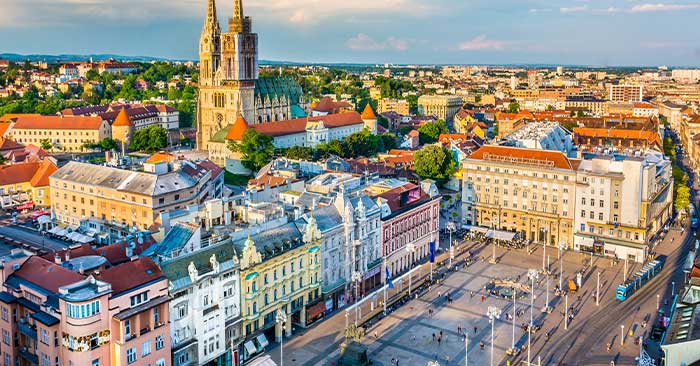This website uses cookies so that we can provide you with the best user experience possible. Cookie information is stored in your browser and performs functions such as recognising you when you return to our website and helping our team to understand which sections of the website you find most interesting and useful.
Cost of travel in Croatia
While Croatia is not as expensive as countries in Western Europe, it is by no means as cheap as most other countries in Eastern Europe! It sits somewhere in between, with high prices in the main tourist locations. If you wander a little off the tourist trail and follow the local residents, you are still able to find reasonable pricing.
In general, costs are always going to be lower in the off-season, winter. It’s also cheaper to travel in the shoulder seasons of Spring and Autumn. Summer is the most expensive season and islands such as Hvar that have limited accommodation can afford to charge travellers sometimes extortionate pricing.
All our group tours to Croatia include all accommodation, transport between destinations, a tour leader and some fantastic excursions. All you need to worry about is spending money.

Money and currency in Croatia

The currency of Croatia is the Kuna. However, the euro is also occasionally accepted. 1 Croatian Kuna is approximately 0.15 euro, 0.12 GBP, 0.15 USD, 0.22 AUS and 0.20 CAD. This, of course, fluctuates daily depending on exchange rates, and we highly recommend downloading the XE app to your phone. Alternatively, follow the link here.
If you decide to pay in euros be aware the conversation rate the shop uses will rarely be good and you are likely to be shortchanged, so when possible always pay with the local currency. Most credit and debit cards are widely accepted but you should always carry cash for smaller expenses and tipping. Always carry some coins, as all public bathrooms in Croatia charge around 30 to 50 cents.
ATM's and banking
ATMS are widely available throughout Croatia, even in more remote places such as Plitvice National Park. Always advise your bank prior to travel so that your card does not get blocked when using it abroad. Banks in Croatia are normally open Monday to Friday working hours, and are closed on the weekend. Exchange offices are more likely to be open in the evening in tourist areas.
General costs in Croatia
Food & Drink
Prices for food vary quite drastically in Croatia depending on one thing – location! If you pop into the first restaurant you find in Dubrovnik Old Town, chances are the prices will be higher than normal. Wander a little further away and you will come across some gems with more appropriate pricing. A main meal will set you back anything from 6 to 15 euros. Of course the cheapest option is to pick up some local produce from a market or street vendors.
Transport
Transport in Croatia is relatively cheap and won’t eat into your budget too much. The best options are bus and ferry, as flying between destinations within Croatia or hiring a car will cost a lot more. Domestic buses run all over the country and prices start from around 10 euro. Always book online or in advance from the station to get the best price. A ferry from Split to Hvar in high season is around €15 if booked at least one week in advance. Bus travel within the cities is very affordable, with a one way ticket costing 15 kuna.
Admission Fees
Admission fees in Croatia depend on the popularity of the attraction and the season. Dubrovnik City Walls and entrance to Plitvice Lakes are expensive in high season, around 29 euros and 34 euros respectively. Museums and smaller attractions will cost anything from a few euros up to 10 euros.
Tipping etiquette and costs
As with most other European countries, if the service is good tipping is expected in Croatia. Tip 10-15% in restaurants, round by the amount in taxis and always tip local walking guides. Some cities in Croatia offer free walking tours, these are tip based and depending on the length of the tour an appropriate tip is 5 to 20 euros per person.
Can you haggle in Croatia?
It’s not the norm to haggle in Croatia. It can sometimes be done in local markets however you’ll get some strange looks if you try and do it elsewhere.
We are passionate adventure travelers who want to share the world and our travel experiences with everyone…
